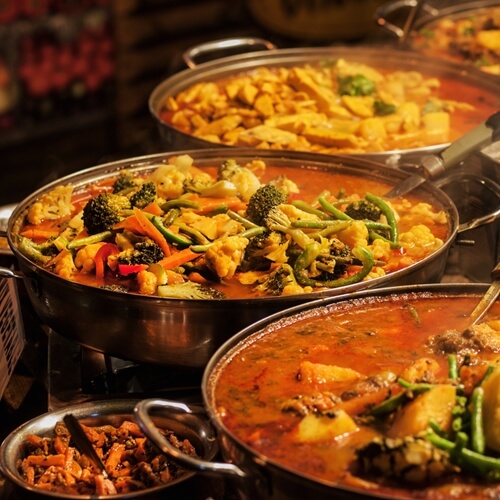Some Like It Spicy: Tips For Cooking With Curry
Originally hailing from Southeast Asia, curry refers to any number of dishes that feature a mix of the herbs cumin, coriander and turmeric. Curry usually comes either wet – as a sauce mixed with yogurt and coconut milk – or dry, in which it’s used as a rub or powder. Given the increasing popularity of curry outside its home region, it’s definitely worth a chef’s time to better understand this multifaceted dish.
A breakdown of curry
As curry is basically an umbrella term for several interrelated dishes, there’s various ways it shows up in meals from across the globe. Some of the more popular options include:
- Red curry: Often noted for its versatility, this curry pairs will with beef, shrimp and duck. It’s made from mixing dried chili peppers, garlic, sea salt and turmeric.
- Green curry: This curry is comprised of a lively blend of sea salt, lemongrass, coriander root, white pepper and shallots. As such, it’s often heralded as being the most spicy choice.
- Yellow curry: With a sweet aftertaste, this is a curry for those who like more flavor than outright spice. It gets that sweetness by combining turmeric and curry powder with ginger, shallots, shrimp paste and galangal.
- Masaman curry: A decidedly popular choice amongst Western curry eaters. It’s easy to see why, as the garlic, cumin, cloves, salt and dried red chilies result in extra rich flavors.
How to spice food
According to The Kitchn, the Indian culinary tradition has a unique way of developing spice within a given dish. For one, many local chefs won’t simply coat soup and various sauces in spicy powder. Instead, they will take a more methodical approach, slowly cooking the spices with onions. From there, they’ll sweat the onions with a mix of spices, oil and ground spice powder. The aim is to make sure the flavor has permeated throughout the onion, as powders sometimes only coat the very exterior. Finally, the powdered form is added at the very end to lend that final bit of kick.
A bit of sweetness
Even if you prefer the hottest curry possible, it’s important to always cook with a little bit of sweetness. More than simply limiting or reducing the intensity of the curry’s heat, sugar can give a sense of balance and overall body to the spice. For more complex flavors, try fruit juice or sauce. Just be sure to always mix in the sweetener at the very beginning of the cooking process to ensure the flavors blend together properly. Cooking meats and vegetables directly in the curry sauce can also create a more unified flavor .
Further practice cooking with curry by enrolling in culinary academy.


